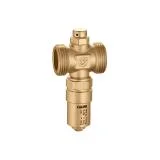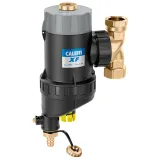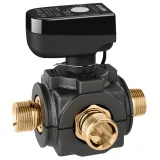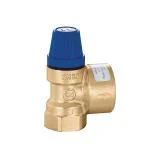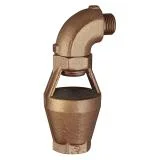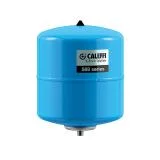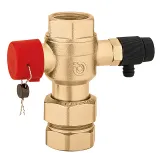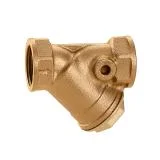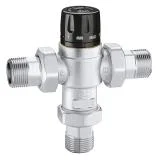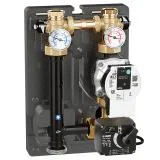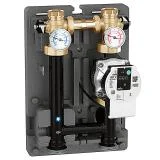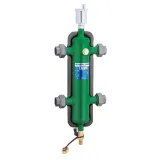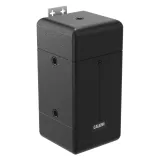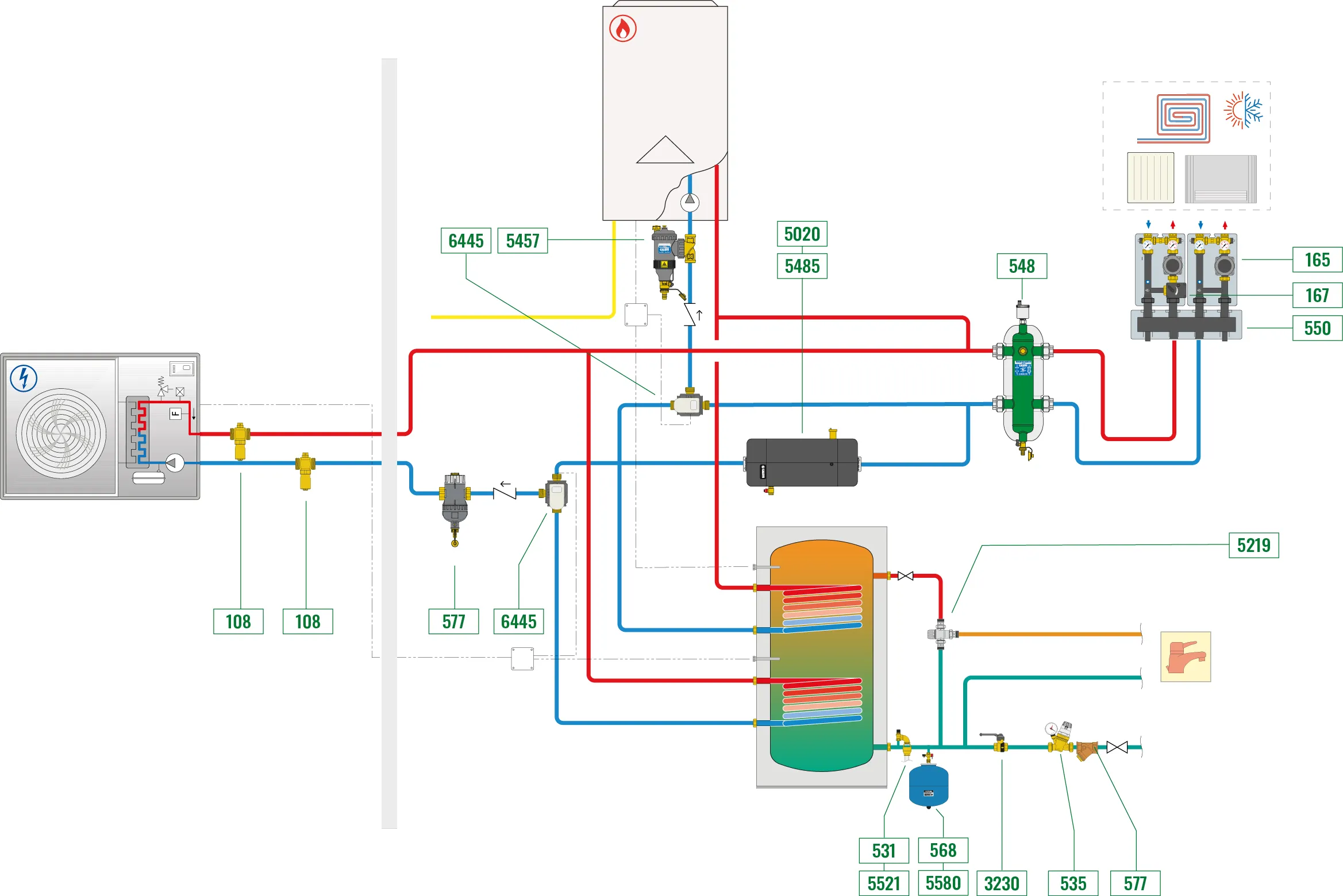
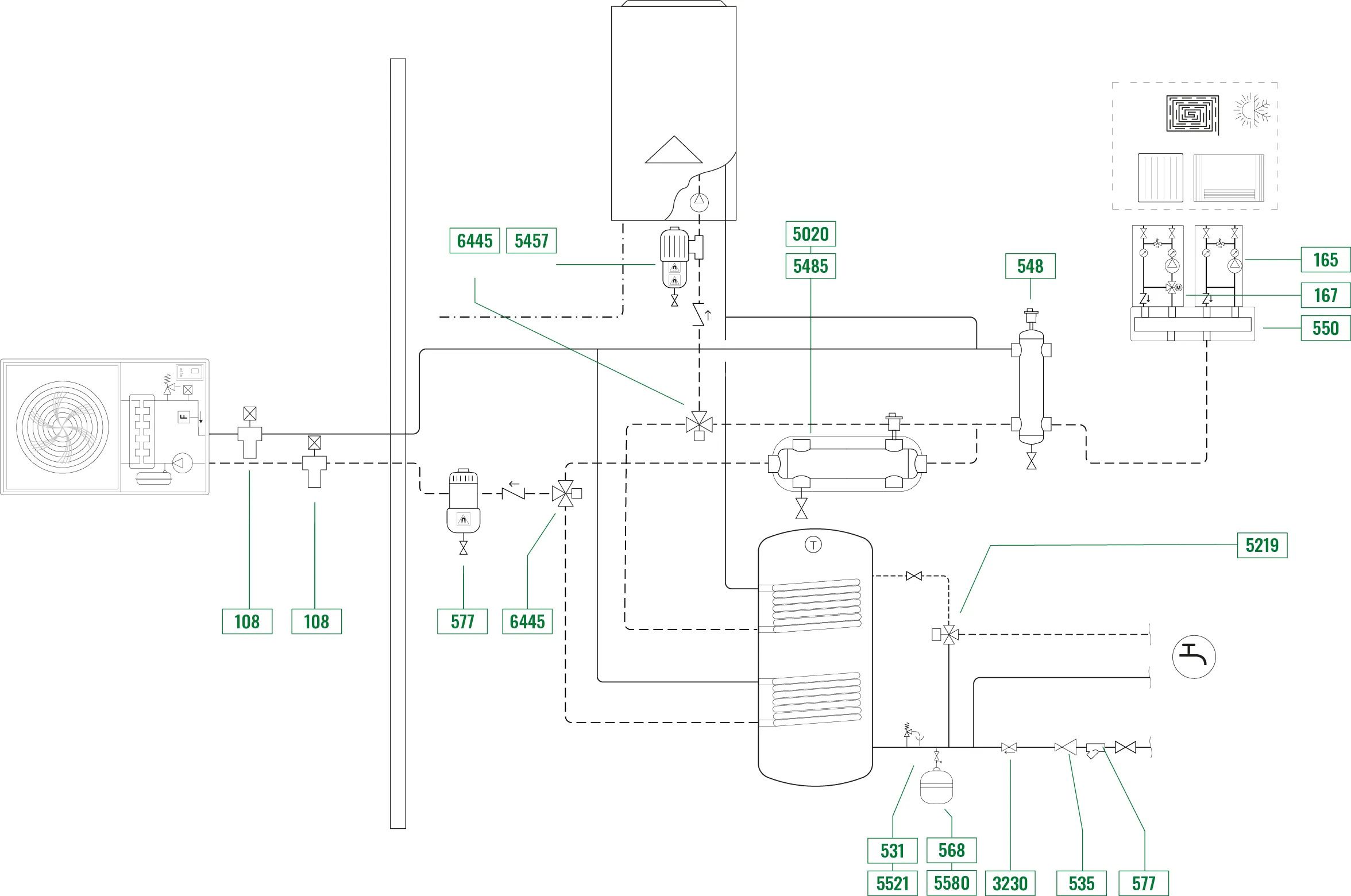
The system consists of a primary circuit which includes:
- Condensing boiler
- Monobloc heat pump
- Hydraulic separator
- Inertial storage for “technical water” on the return line to the heat pump
- Two diverter valves enabling activation of the various operating conditions
- Antifreeze devices to protect the monobloc heat pump
- Water treatment devices (dirt separator) for the protection of generators and, more generally, all system components
The secondary circuit consists of:
- Central unit manifold
- Direct booster unit
- Motorised regulating and booster unit
Hot water production takes place via a circuit fitted with:
- Domestic water storage with two coils for heat exchange
- A mechanical thermostatic mixing valve for adjusting the flow temperature at the domestic water user points
- A strainer/pressure reducing valve unit for regulating the pressure of the domestic water at the inlet
This solution is generally used in the following cases:
- Renovation: adding a heat pump to an existing system with wall-mounted boiler
- New systems using non-integrated generators
The benefits are linked to the ability to serve a greater number of users than with instantaneous production, and the ability to use the renewable energy from the heat pump to produce DHW.
On the other hand, the disadvantages of this configuration include the need for technical space for the domestic hot water storage and a more complicated system.
The layout is optimised for a system which runs in both heating and cooling phases. The two diverter valves allow operation in various configurations.
Heating with boiler + HP
Under specific climatic and load conditions, the two elements can work in parallel. The boiler increases the temperature of the water in the system until it reaches a certain value, while the HP runs in maintenance mode. The two generators can work individually, depending on the thermal load.
DHW with boiler + Heating with HP
The most common operating condition is where DHW production is delegated wholly to the boiler, while the HP takes care of heating.
DHW with boiler + Cooling with HP
In summer, the boiler only produces DHW without needing to stop the heating and cooling system from cooling.
DHW with boiler + DHW with HP
When there is heavy demand for domestic water, both machines can work to produce DHW at the same time.
DHW with boiler + Cooling with HP
DHW is produced entirely by the boiler in the domestic hot water storage tank. This means the HP only manages the production of chilled water for cooling. This means the inertial tank also contains chilled water only.
Note:
The control, expansion and safety equipment must be of appropriate size to reflect the heating capacity and specific characteristics of the system, in accordance with applicable laws and regulations.
